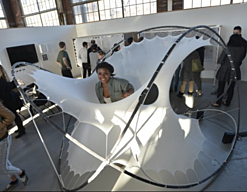Kinaesthetic Interface for Engaged Learning and Social Interaction
TECHNOLOGY NUMBER: 7642

OVERVIEW
Improved learning and social engagement for children with Autism Spectrum Disorder (ASD)- Sensory experiences designed to confront critical challenges of learning and social engagement
- Sensory surface textiles are tailored for gradations of touch to prompt a variety of responses
BACKGROUND
The CDC estimates that the Autism incidence rate in children has increased from 1:68 to 1:59 in just the past two years. Several factors contribute to the reported incidence of autism, including changes in diagnostic criteria, increased awareness and recognition of ASD, improved screening and diagnostic practices, and potential environmental and genetic factors. Functionally, up to 95% of kids with autism experience sensory modulation comorbidities. A critical part of social behavior is the ability to process, to perform and interpret a vast repertoire of motor actions, and the restriction in selection of movement skills means fewer opportunities for social interaction and ultimately degraded social outcomes in affected youth. As such, a need exists for improved methods to manage the manifestations of autism in children.
INNOVATION
Researchers at the University of Michigan have developed the Kinaesthetic Interface for Engaged Learning and Social Interaction (KI), which is a hardware & software solution designed to confront critical challenges of learning and social engagement for children with Autism Spectrum Disorder. The Sensory-Surface is a 3'x4' flat and flexible textile interface with colorful designs projected on it. The textiles are tailored for gradations of touch and pressure sensitive input from large sweeping gestures to fine touch and are calibrated to prompt a wide variety of audio and visual responses. The Sensory-Playscape is a similarly designed 3D environment suitable for multiple children, enabling social interaction. These tools aim to address the pace of play, fostering intentionality in movement and providing a visual correspondence to a specific application of pressure. Additional research is underway, with the overall goal being to develop engaging and comforting sensory experiences for children with autism, fostering better environments for learning and social interaction.